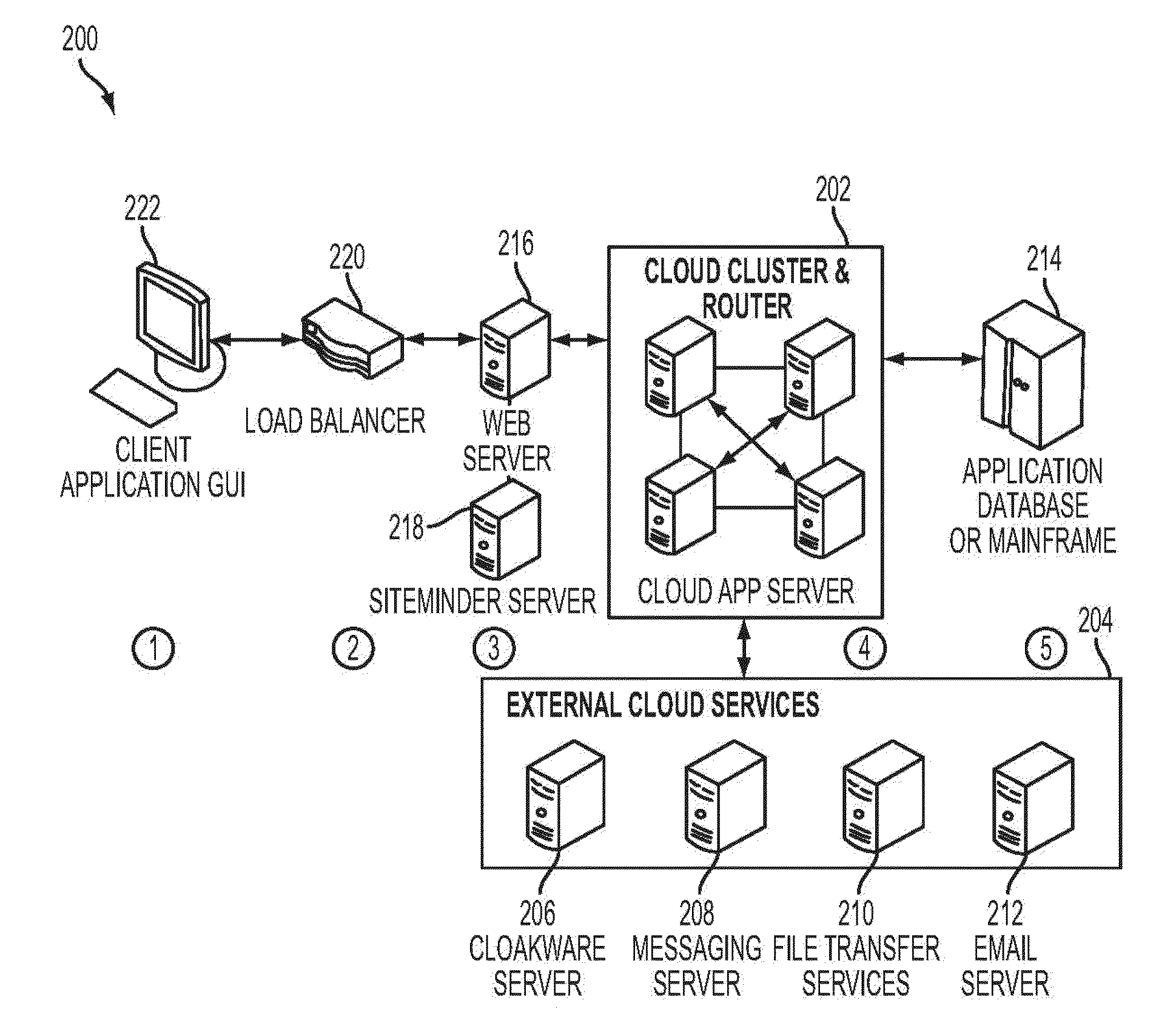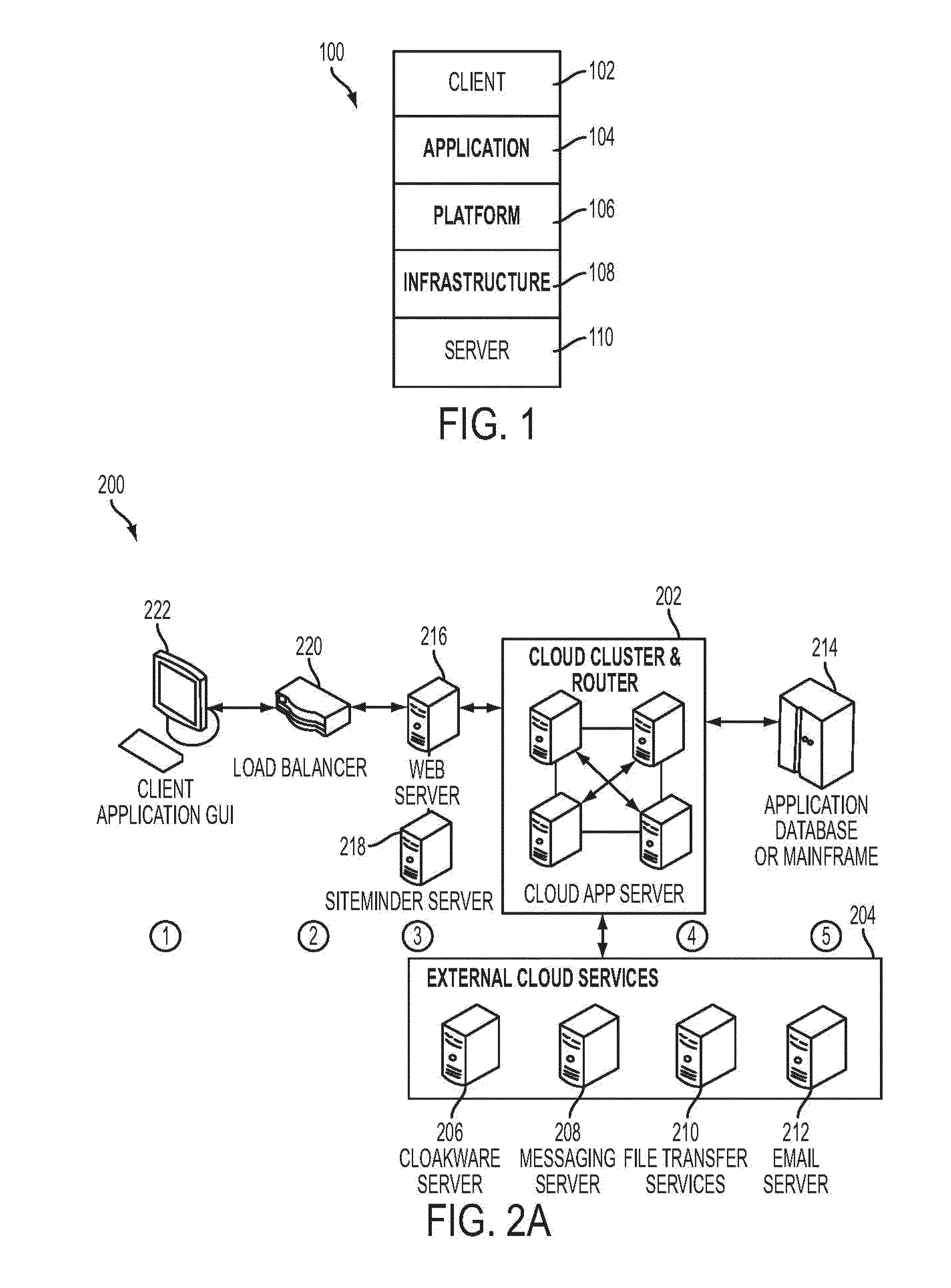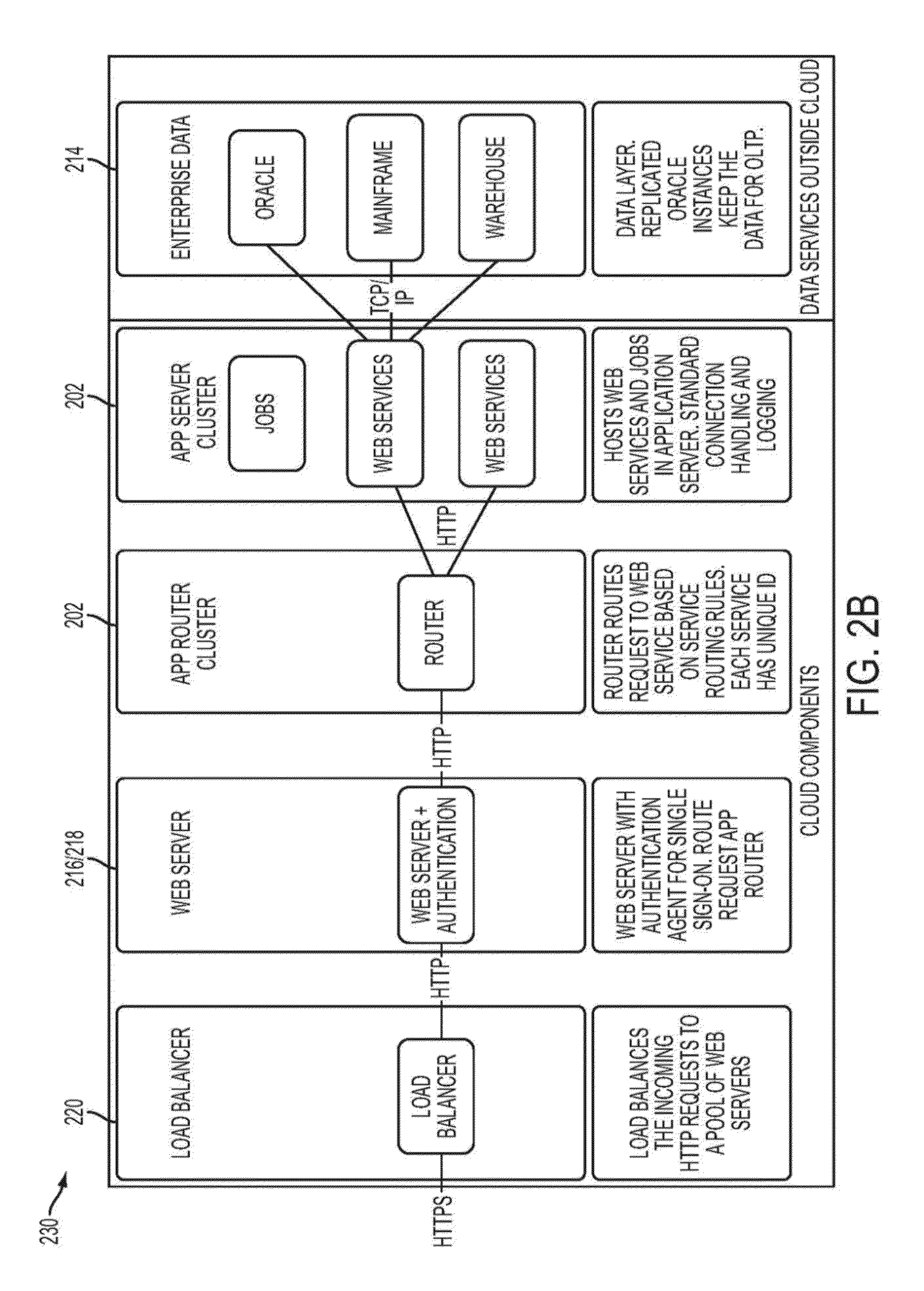Systems and Methods for Data Warehousing in Private Cloud Environment
a data warehousing and cloud environment technology, applied in the field of computer-based systems and methods for data warehousing and warehousing in the cloud, can solve the problems of inability to use eagle paceTM as an “out-of-the-box” solution, time-consuming and costly maintenance and updating of client systems for information technology (“it”) professionals tasked with these responsibilities, and traditional single-tenant implementations, though applicable, were not particularly desirable for
- Summary
- Abstract
- Description
- Claims
- Application Information
AI Technical Summary
Benefits of technology
Problems solved by technology
Method used
Image
Examples
first embodiment
[0357]In a first embodiment, the business processing services, shown as business processing 3422 and 3424 in application server 3420, connect to application database 214 (FIG. 2B) that performs data warehousing. Application database 214 can reside outside the private cloud, as discussed in connection to FIG. 2B, or can reside within the private cloud as shown in FIG. 34A, as represented by data warehouse 3402. As stated, data warehouse 3402 can include one or more ESPs, such as ESP 3404, ESP 3406, and ESP 3408. In data warehouse 3402, cloud services connect to data in secure locations based on entitlement rules, entitlements to data, and entitlements to functions.
second embodiment
[0358]In a second embodiment shown in FIG. 34C, generally at 3430, as in FIG. 34B, business processing 3422 may connect to Enterprise data 214 that may include relational database management system (“RDMS”) 3432, mainframe operating system, e.g., Z / OS, 3434, and warehouse 3436 that may include one or more ESP's.
[0359]The ESP system of the present invention provides a complete middle- and back-office solution for system users. For example, for financial services use, the ESP system is capable of providing asset managers a dynamic, customizable, and scalable self-service platform for all their data needs. The ESP system also is capable of providing accounting and information delivery capabilities, and can allow easy integration with batch, real-time, and one-time data sources from client or third party data providers. The ESP system is presented to the system users through client browser, such as shown in FIG. 2A at 222. To the system users, the ESP system implementation at a client / b...
PUM
 Login to View More
Login to View More Abstract
Description
Claims
Application Information
 Login to View More
Login to View More - R&D
- Intellectual Property
- Life Sciences
- Materials
- Tech Scout
- Unparalleled Data Quality
- Higher Quality Content
- 60% Fewer Hallucinations
Browse by: Latest US Patents, China's latest patents, Technical Efficacy Thesaurus, Application Domain, Technology Topic, Popular Technical Reports.
© 2025 PatSnap. All rights reserved.Legal|Privacy policy|Modern Slavery Act Transparency Statement|Sitemap|About US| Contact US: help@patsnap.com



